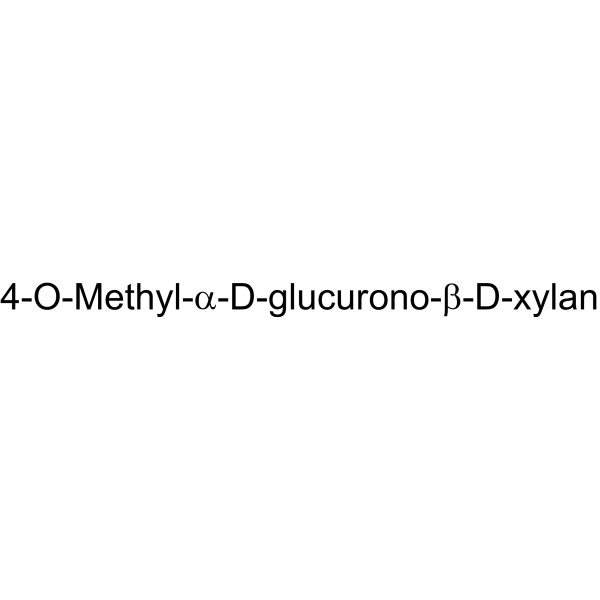Pentosan Polysulfate
Modify Date: 2024-01-12 11:29:04

Pentosan Polysulfate structure
|
Common Name | Pentosan Polysulfate | ||
|---|---|---|---|---|
| CAS Number | 9062-57-1 | Molecular Weight | N/A | |
| Density | N/A | Boiling Point | N/A | |
| Molecular Formula | N/A | Melting Point | N/A | |
| MSDS | N/A | Flash Point | N/A | |
Use of Pentosan PolysulfatePentosan Polysulfate is a semi-synthetic drug used to treat various medical conditions including thrombi and interstitial cystitis. |
| Name | 4-O-METHYL-D-GLUCURONO-D-XYLAN-REMAZOL B |
|---|---|
| Synonym | More Synonyms |
| Description | Pentosan Polysulfate is a semi-synthetic drug used to treat various medical conditions including thrombi and interstitial cystitis. |
|---|---|
| Related Catalog | |
| Target |
HIV-1 NF-κB TNFα |
| In Vitro | Pentosan polysulfate has been shown to inhibit HIV-1 activity with an ED50 of 0.19 μg/mL in MT-4 cells. It inhibits HIV-1 antigen expression in HUT-78 cells at an ED50 of 0.02 μg/mL, and complete inhibition of HIV-1 antigen expression is obtained at a concentration of 4.0 μg/mL[1]. |
| In Vivo | Pentosan polysulfate has been shown to decreases interstitial inflammation and glomerulosclerosis in 5/6 nephrectomized rats. Pentosan polysulfate treatment preserves renal function, significantly reduces albuminuria, and markedly decreases the severity of renal lesions, including tubulointerstitial inflammation. Pentosan polysulfate also reduces upregulation of TNFα and proinflammatory genes in aging diabetic kidneys[2]. Once weekly sc administration of Pentosan Polysulfate in MPS VI rats leads to equal or better therapeutic effects than daily oral administration, including a surprising reduction in urine and tissue GAGs. No adverse effects from sc Pentosan Polysulfate administration are observed over the 6-month study period[3]. |
| Cell Assay | MT-4 and HUT-78 cells are cultured in microtray wells in the presence of pentosan polysulfate (0-2500 μg/mL) added immediately after infection with 100 CCIDs0 of HIV-1 (CCIDs0 being the 50% cell culture infective dose). After 5 days incubation at 37°C, the number of viable ceils is determined by the 3'-(4,5-dimethylthiazol-2-yl)-2,5-diphenyltetrazolium bromide (MTT) method[1]. |
| Animal Admin | Mice with stable hyperglycemia at 18 months of age are selected for the study. Eighteen-month-old diabetic mice are randomly divided into pentosan polysulfate-treated (25 mg/kg/day in the drinking water) and control groups. Diabetic mice are followed for 4 months without insulin treatment. Mouse is housed individually and water intake is recorded every other day. Body weight and blood glucose levels are monitored weekly. Additionally, urine ketones are examined. Urine albumin excretion is measured bi-weekly[2]. One-month-old MPS VI rats are given once weekly sc injections of Pentosan Polysulfate (1, 2 and 4 mg/kg, human equivalent dose (HED)), or daily oral Pentosan Polysulfate (4 mg/kg HED) for 6 months. Serum inflammatory markers and total glycosaminoglycans (GAGs) are measured, as are several histological, morphological and functional endpoints[3]. |
| References |
| No Any Chemical & Physical Properties |
| Pentosan Polysulfate |